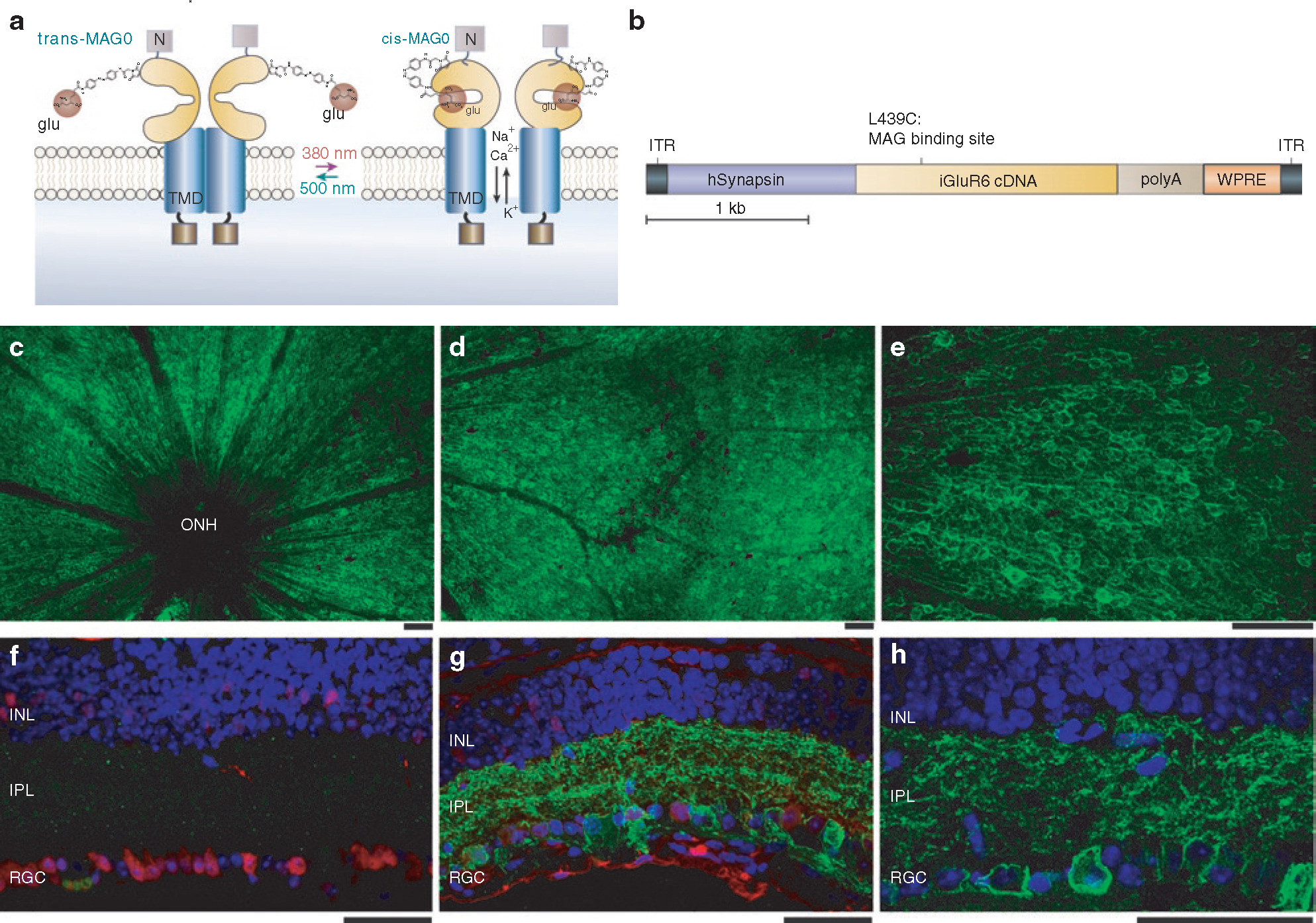
Optical quantal analysis of synaptic transmission in wild-type and rab3 mutant Drosophila motor axons
Abstract
Inherited retinal degeneration results from many different mutations in either photoreceptor-specific or nonphotoreceptor-specific genes. However, nearly all mutations lead to a common blinding phenotype that initiates with rod cell death, followed by loss of cones. In most retinal degenerations, other retinal neuron cell types survive for long periods after blindness from photoreceptor loss. One strategy to restore light responsiveness to a retina rendered blind by photoreceptor degeneration is to express light-regulated ion channels or transporters in surviving retinal neurons. Recent experiments in rodents have restored light-sensitivity by expressing melanopsin or microbial opsins either broadly throughout the retina or selectively in the inner segments of surviving cones or in bipolar cells. Here, we present an approach whereby a genetically and chemically engineered light-gated ionotropic glutamate receptor (LiGluR) is expressed selectively in retinal ganglion cells (RGCs), the longest-surviving cells in retinal blinding diseases. When expressed in the RGCs of a well-established model of retinal degeneration, the rd1 mouse, LiGluR restores light sensitivity to the RGCs, reinstates light responsiveness to the primary visual cortex, and restores both the pupillary reflex and a natural light-avoidance behavior.